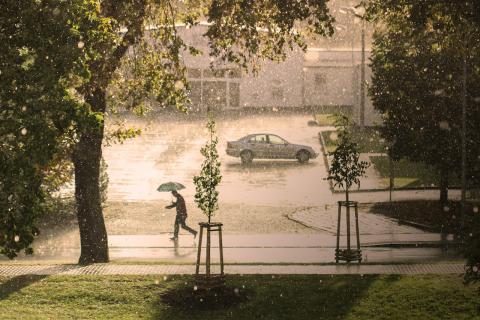What's Stressing Our Community Trees?

You might be thinking, what isn’t stressing our trees these days? Sadly, you’re not wrong. Trees are having a tough go of it at the moment, for more than a few reasons. Lingering damage from past seasons’ weather impacts and ongoing invasive pests and diseases are compounded by recent weather.
After a hot, dry summer, much of New Hampshire is in drought, causing premature leaf deterioration in some species in some areas. This is a continuation of a trending pattern of cool, wet springs and warmer summers that alternate flooding storms with periods of drought. Cold-adapted species like sugar maple are significantly stressed by this. Birches are also showing stress, but they seem to be coping better. Like a ficus will shed leaves indoors as conditions shift, birches tend to shed foliage they cannot sustain in the short term and come back strong when conditions improve.
Beech trees are particularly vulnerable to drought. To add insult to injury, beeches are suffering from an onslaught of beech bark disease and, increasingly, beech leaf disease spread by nematodes. Trees are surviving, but they are struggling. As a key woodland species for bears, mammals, birds and insects their decline would be a huge impact ecologically.
Sadly, beech are not the only species with disease issues. Hemlocks are fighting hemlock wooly adelgid and elongate hemlock scale. Eastern white pines are still recovering from widespread needle disease following our very rainy 2023 season. Red Pine Scale continues to spread and will be a big impact on the Keene urban landscape in the next few years, echoing the loss of vegetation from the 1938 hurricane.
We humans, sadly, can also be a source of stress on our urban trees. We squeeze them into too-small concrete pits between buildings and streets which are heat sinks, compounding the drought stress. Pollution, soil compaction, mechanical damage from equipment or vandalism, and benign neglect are all factors contributing to tree stress. All of these elements in combination can cause tree health to decline.

Manion Disease Spiral, Washington State University
For more information on what’s ailing our trees, check the Forest Health Newsletter
